How to grow broccoli rabe – for quick harvests of unique and delicious florets, stems, and leaves
It may be broccoli rabe, raab, or rapini - whatever you know it as, here is how to grow the superb crop successfully
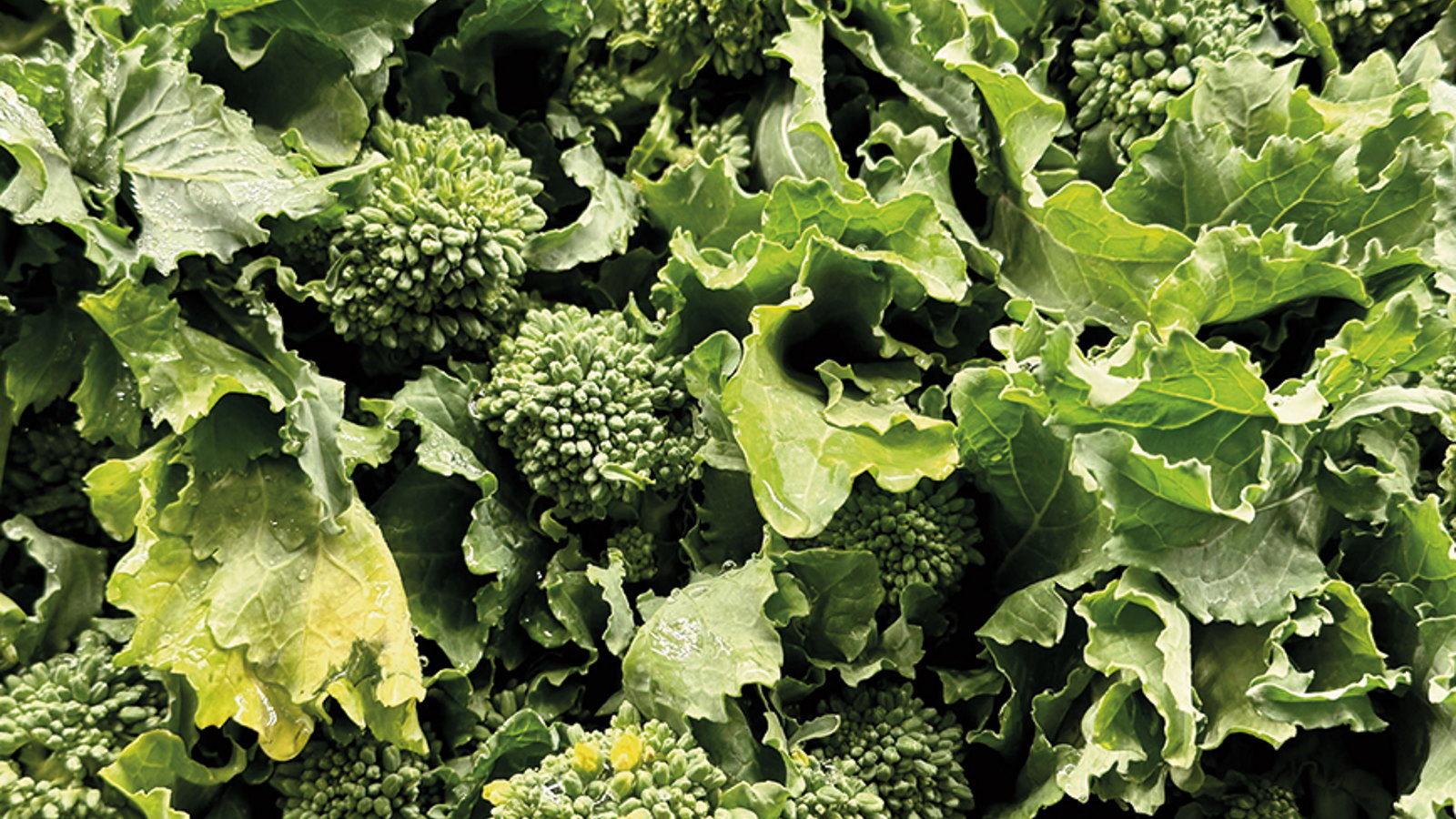

Broccoli rabe is a unique vegetable to grow and not one commonly seen as part of people’s vegetable garden ideas. Despite being lesser-known, and rather confusingly going by many different names, it is a speedy crop to grow and you can get multiple harvests a year.
Broccoli rabe is also known as broccoli raab or rapini. The entire plant is edible, from its central head and side shoots to the leaves and stems. It is worth discovering for anyone looking for new and interesting vegetables to plant in their garden.
I first learned about the crop when working as a gardener in the productive vegetable garden at Soho Farmhouse in the UK. The kitchen garden grew vegetables year-round for the on-site restaurants and broccoli rabe was a crop we harvested for the chefs throughout winter. Here is what I know about how to grow broccoli rabe, along with a few tips from an expert horticulturist.
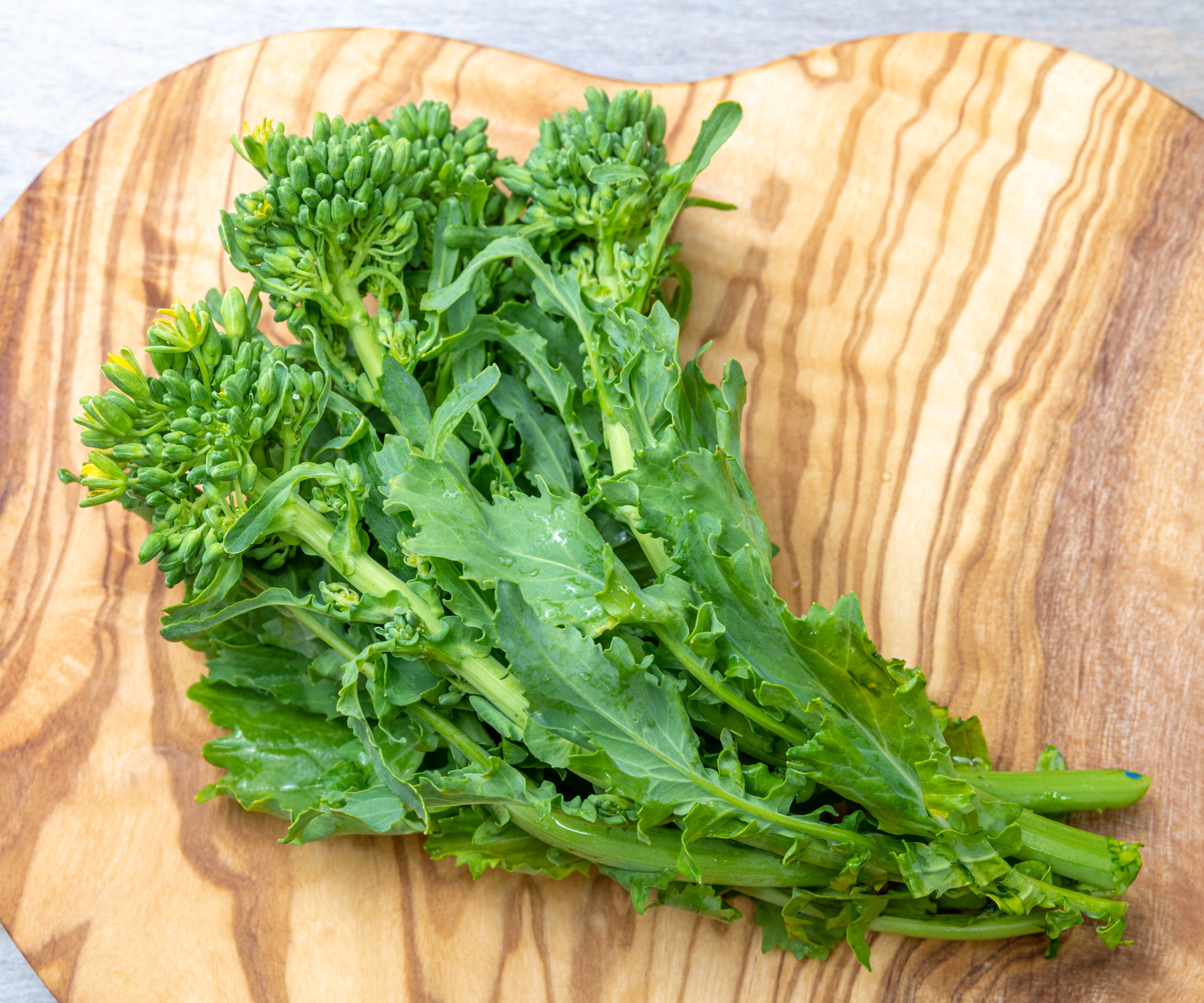
Broccoli rabe is rich in vitamins and minerals, including potassium
What is broccoli rabe?
No matter what you call it, the crop resembles broccoli but is not part of the broccoli family - it is actually related to turnips. It is a fast-growing vegetable with edible buds and leaves with a distinctive bitter and nutty flavour. Broccoli rabe is rich in vitamins and commonly used in Mediterranean cuisine.
Planting broccoli rabe - when and where
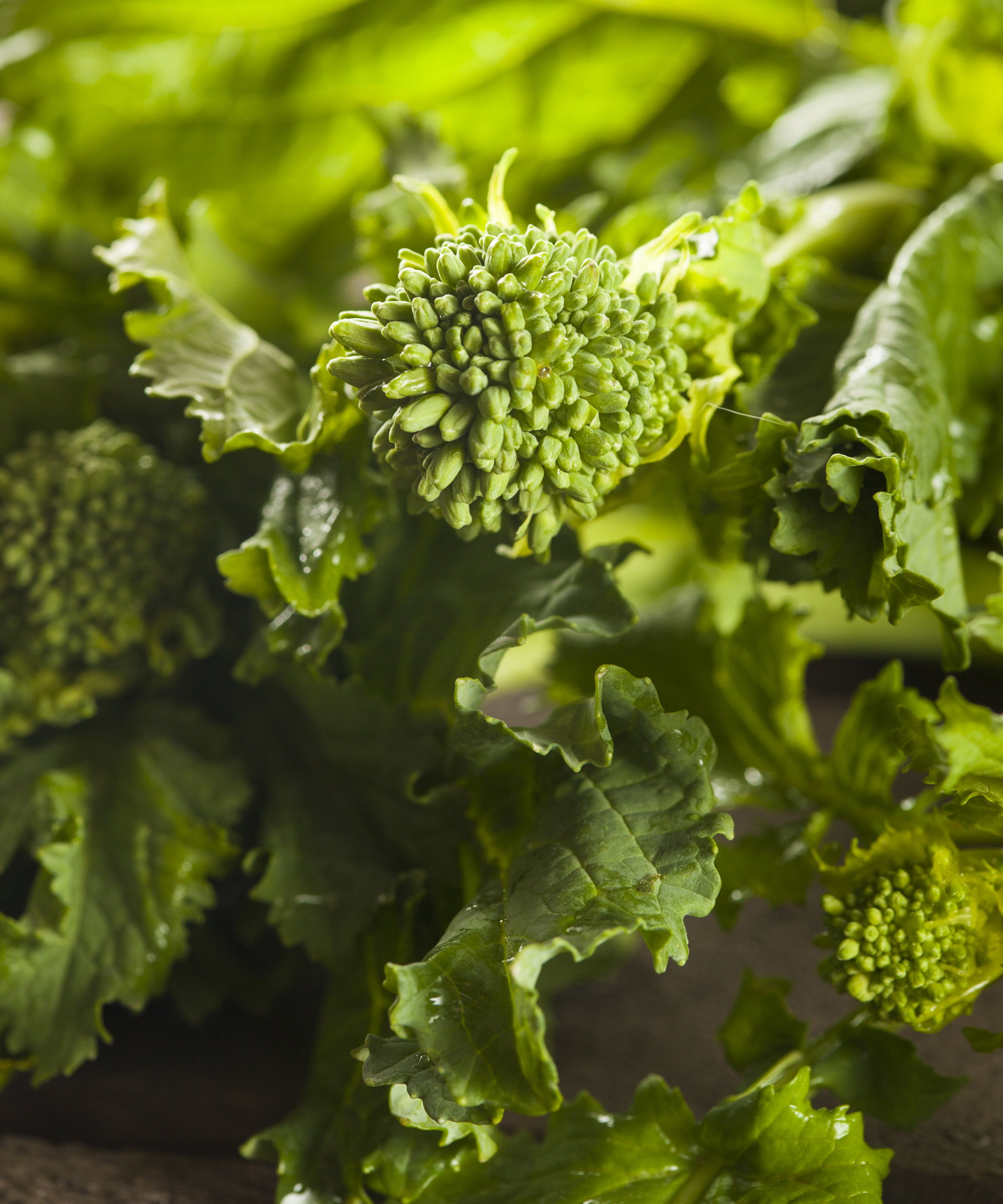
Grow broccoli rabe for bitter and peppery harvests of florets, stems, and leaves
Broccoli rabe is a cool-weather vegetable and there are windows for planting broccoli rabe in both spring and late summer or early fall. The plants will bolt when the temperatures rise in summer so, when planning a seed sowing schedule, give broccoli rabe enough time to mature and provide a crop - especially if you live in a warmer US hardiness zone.
The frost dates for your location will impact when and where you sow broccoli rabe. While the crop does prefer being planted directly into the soil, you can start the vegetable indoors in cooler climates.
Amy Enfield, senior horticulturist at ScottsMiracle-Gro, recommends: ‘For spring planting, start seeds indoors about 3-4 weeks before the last expected frost date or direct sow seeds in the garden about 4-6 weeks before the last expected frost date - or as soon as the soil can be worked.
‘For late summer or early fall planting, start seeds in late summer, 8-10 weeks before the first frost,’ adds Amy. A later sowing should give you harvests from mid-fall onwards.
Plant broccoli rabe in a sunny spot in the kitchen garden, ideally the crop wants at least six hours of sunlight a day. It can tolerate light shade and will prefer some protection in warmer climates.
The crop prefers a rich and well-draining soil type. Add some compost or well-rotted manure to the soil before planting to boost the fertility and provide the crop all the nutrients it needs for the season. Mulching around the plants is also beneficial to retain moisture in the soil and suppress competition from weeds.
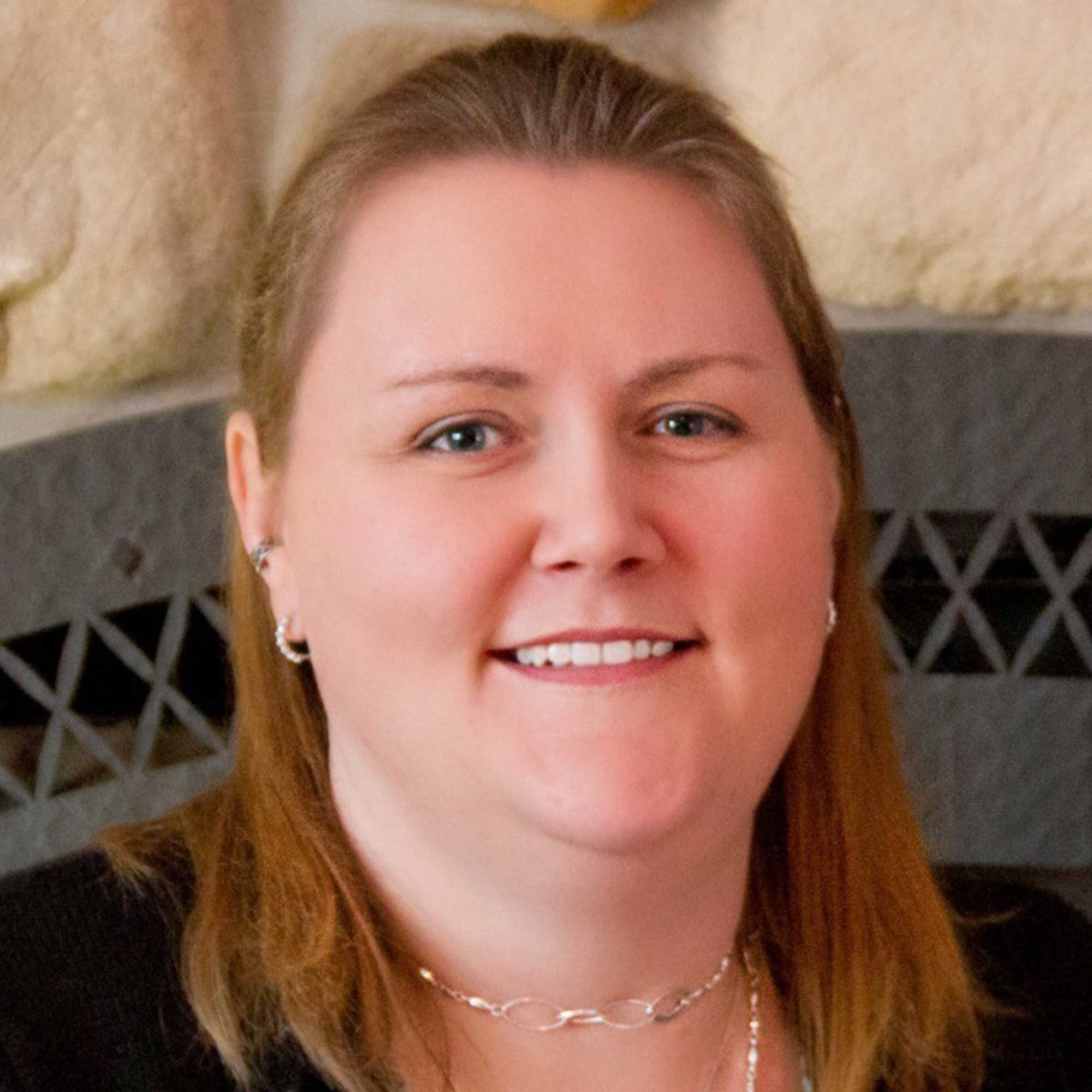
Amy has over 25 years of experience in the garden industry and has been with ScottsMiracle-Gro for 12 years. She has a BS and MS in Horticulture from Michigan State University and a PhD in Plant and Environmental Sciences from Clemson University.
How to grow broccoli rabe from seed
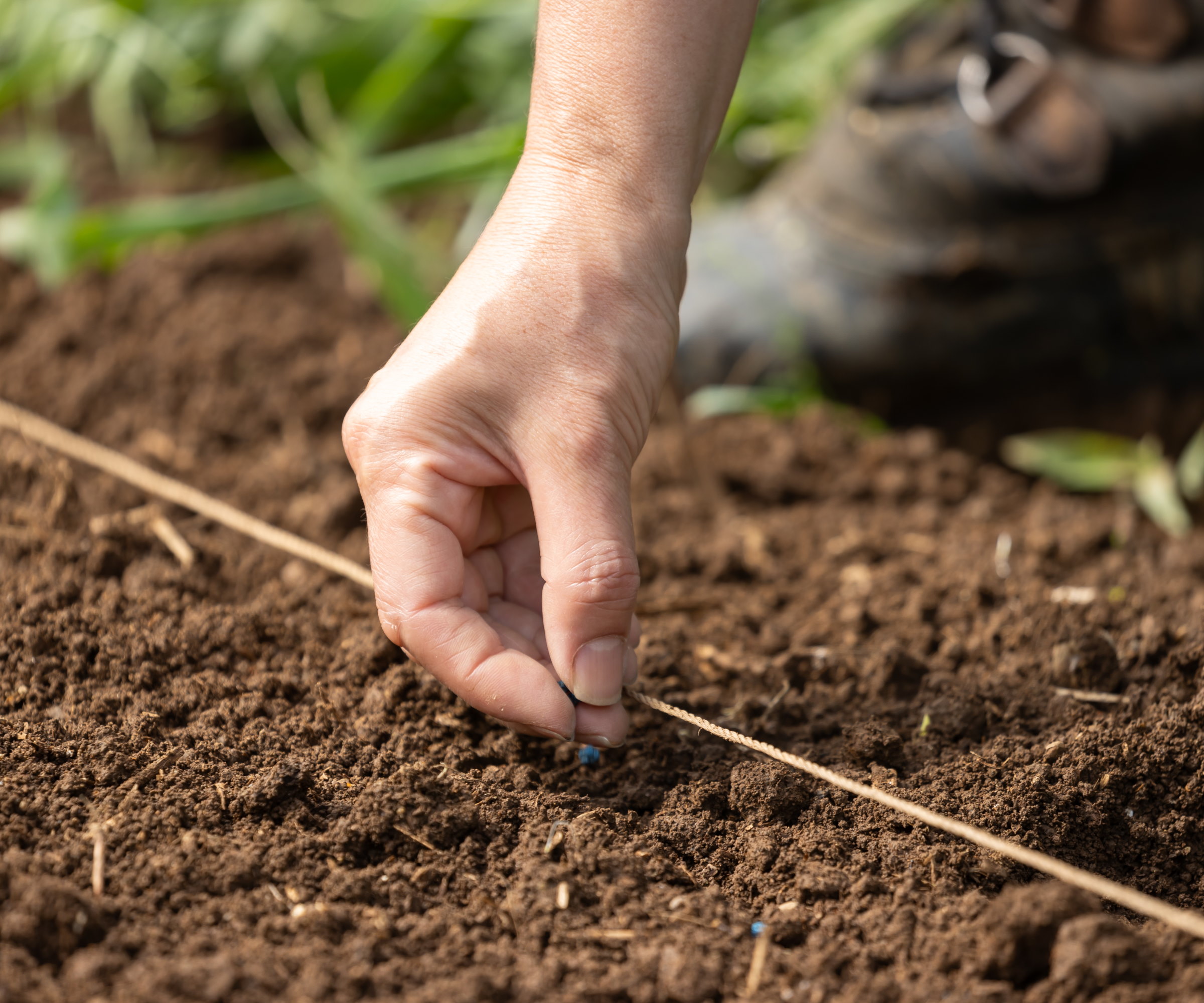
Sowing seeds directly is a successful method of growing broccoli rabe
It is advantageous to sow seeds outdoors directly into the soil wherever possible. The plant has delicate roots and can be temperamental when you transplant seedlings. Direct sow the seeds a quarter-inch deep and 2-4 inches apart in rows 18-24 inches apart. Thin the seedlings to 4-6 inches apart when they are a couple of inches tall to give plants room to develop.
Sowing seeds indoors can be done successfully if you live in colder climates. Sow the seeds into large transplant trays or individual pots, putting 2-3 seeds into each cell or pot. Using larger cells or pots limits root disturbance while transplanting - biodegradable pots, available at Amazon, are recommended for the same reason, as you plant the pot.
Seeds will germinate well at temperatures of 60-75°F in a greenhouse or on a warm windowsill. Harden off the seedlings to adapt them to outdoor conditions and space the plants at least 12 inches apart.
Shop broccoli rabe seeds
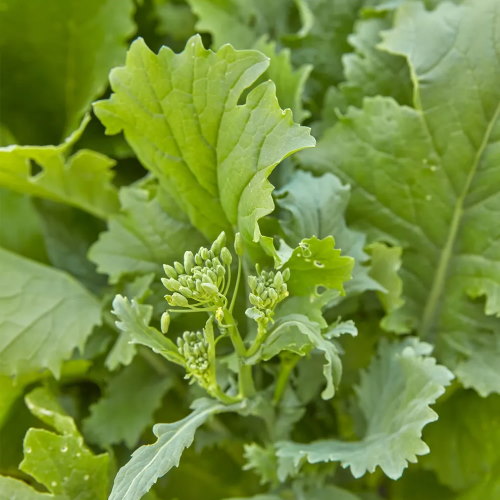
A variety that matures very quickly from seed and produces green shoots with a captivating flavor.
Caring for broccoli rabe plants
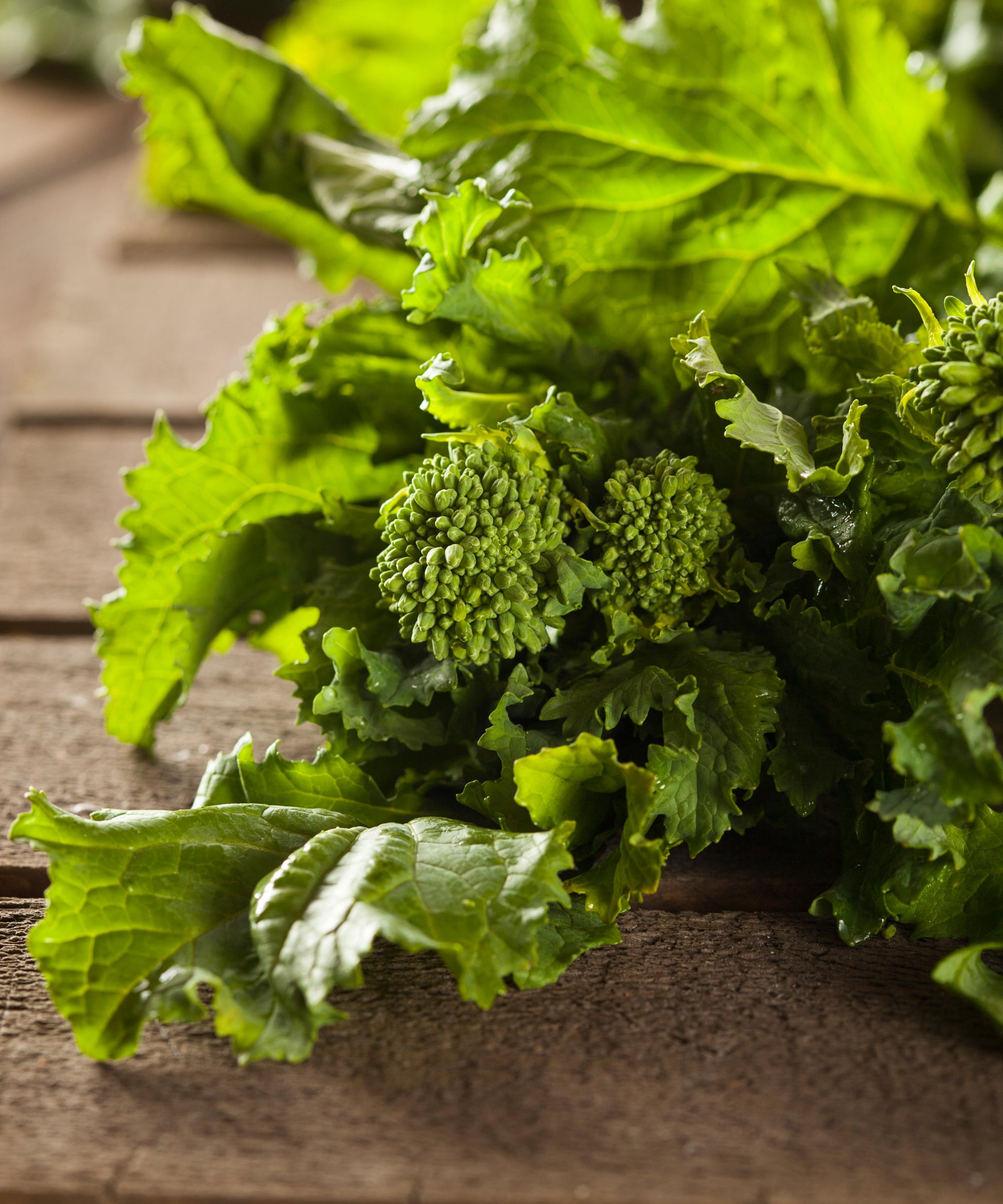
Broccoli rabe will resprout more side stems after harvesting
The main maintenance task when growing broccoli rabe is to keep a close eye on watering plants. Amy Enfield recommends keeping the soil ‘consistently moist’ during the early stages of growth. ‘Aim for about 1-2 inches of water per week,’ she adds. ‘The soil should have the moisture consistency of a wrung-out sponge. If the soil is kept too wet, the plants will rot.’
Increase the watering during hot and dry weather and be careful how you water plants. Aim to water the base of the plant and do deep watering, soaking the foliage is a garden watering mistake that risks fungal disease and only watering lightly makes plants more susceptible to dry conditions. A soil moisture meter, available at Amazon, can help keep the soil evenly watered through the season.
Broccoli rabe will benefit from measures being put in place to protect the crop from pests, including aphids, flea beetles, slugs and snails, cutworms, and cabbage worms. The best preventative measures include using row covers to protect young plants and companion planting around the crop with aromatic herbs to deter pests. Insecticidal soap, available at Walmart, can be used to get rid of aphids.
Harvest broccoli rabe when the plants reach 12 inches tall and the heads are around an inch wide. Remove the heads with a sharp knife or pruning shears. Regular harvesting will encourage the growth of lots of side shoots.
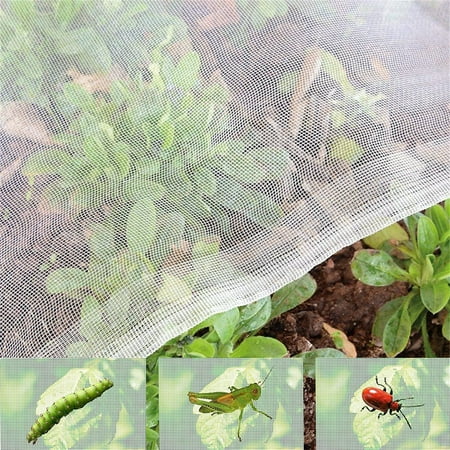
A fine mesh row cover to protect plants from damage due to pests and birds. The fine mesh allows air and water to pass through to not affect the growth of plants.
FAQs
Can you grow broccoli rabe in pots?
If you wonder how to grow broccoli rabe in containers, the great news is that the crop can successfully be grown as part of any vegetable container garden ideas. Plant the crop in a large container at least 24 inches wide and deep, with holes in the bottom for drainage. Fill the container, or grow bag, with a good quality potting mix and either sow seeds directly or transplant seedlings into the pot. Place the pot in a sunny spot and monitor it closely as watering plants in containers must be done more often than in the ground.
How long does it take to grow broccoli rabe?
Broccoli rabe is a fast-growing vegetable that takes 40-90 days to go from sowing to reaching maturity. The exact time will depend on the variety and the weather throughout the growing season.
Another unusual crop similar to broccoli is broccolini. This vegetable is a hybrid between European broccoli and Chinese broccoli and is also known by names such as gai lan, aspabroc, tender stem broccoli, or baby broccoli. Plants produce a mass of small shoots to harvest and can be super-productive. I grew broccolini for chefs at a Michelin-starred restaurant and wrote this guide for H&G on how to grow broccolini in backyard vegetable gardens.
Sign up to the Homes & Gardens newsletter
Design expertise in your inbox – from inspiring decorating ideas and beautiful celebrity homes to practical gardening advice and shopping round-ups.

Drew’s passion for gardening started with growing vegetables and salad in raised beds in a small urban terrace garden. He has worked as a professional gardener in historic gardens and specialises in growing vegetables, fruit, herbs, and cut flowers as a kitchen gardener. That passion for growing extends to being an allotmenteer, garden blogger, and producing how-to gardening guides for websites. Drew was shortlisted for the New Talent of the Year award at the 2023 Garden Media Guild Awards.
-
 This once-dated kitchen is now a timeless space with the coziest details – and its the classic color palette that's made it a chic, welcoming space
This once-dated kitchen is now a timeless space with the coziest details – and its the classic color palette that's made it a chic, welcoming spaceWarming colors and natural materials combine to create this enduringly classic kitchen scheme
By Molly Malsom Published
-
 How to grow crepe myrtle in pots – and transform even the smallest of yards with dazzling flowers this summer
How to grow crepe myrtle in pots – and transform even the smallest of yards with dazzling flowers this summerGrowing crepe myrtles in pots will inject splashes of brilliant color into your outside space
By Thomas Rutter Published
-
 7 of the best tomatoes for growing in pots – expert growers pick their top varieties ideal for large harvests from containers
7 of the best tomatoes for growing in pots – expert growers pick their top varieties ideal for large harvests from containersYou can enjoy bumper homegrown harvests in small spaces
By Drew Swainston Published
-
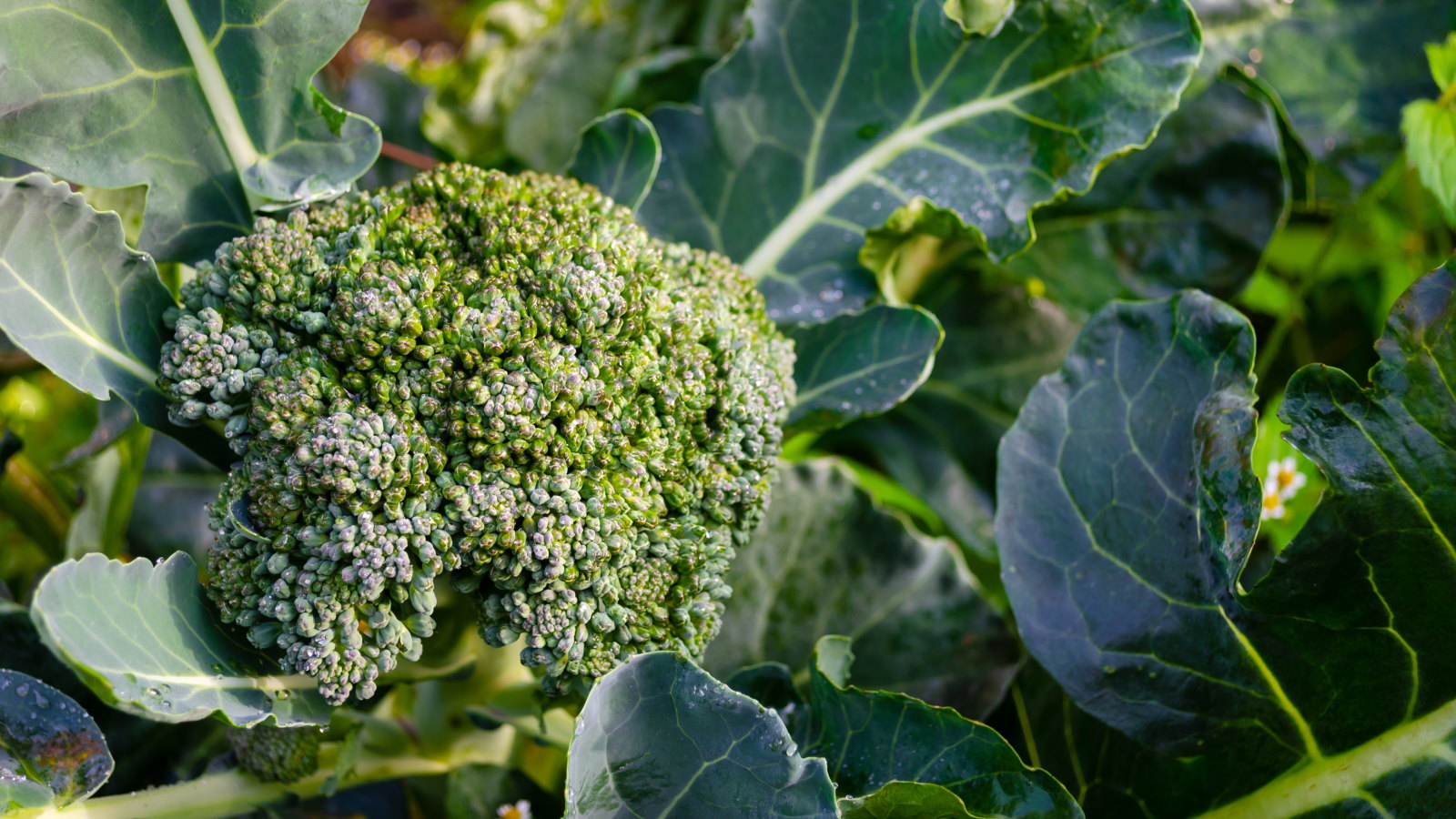 These 5 plants can help you get the best, and potentially tastiest, broccoli ever – discover what to plant with broccoli, and what to avoid
These 5 plants can help you get the best, and potentially tastiest, broccoli ever – discover what to plant with broccoli, and what to avoidOur selection of vegetables, herbs, and flowers is perfect for companion planting with broccoli
By Drew Swainston Published
-
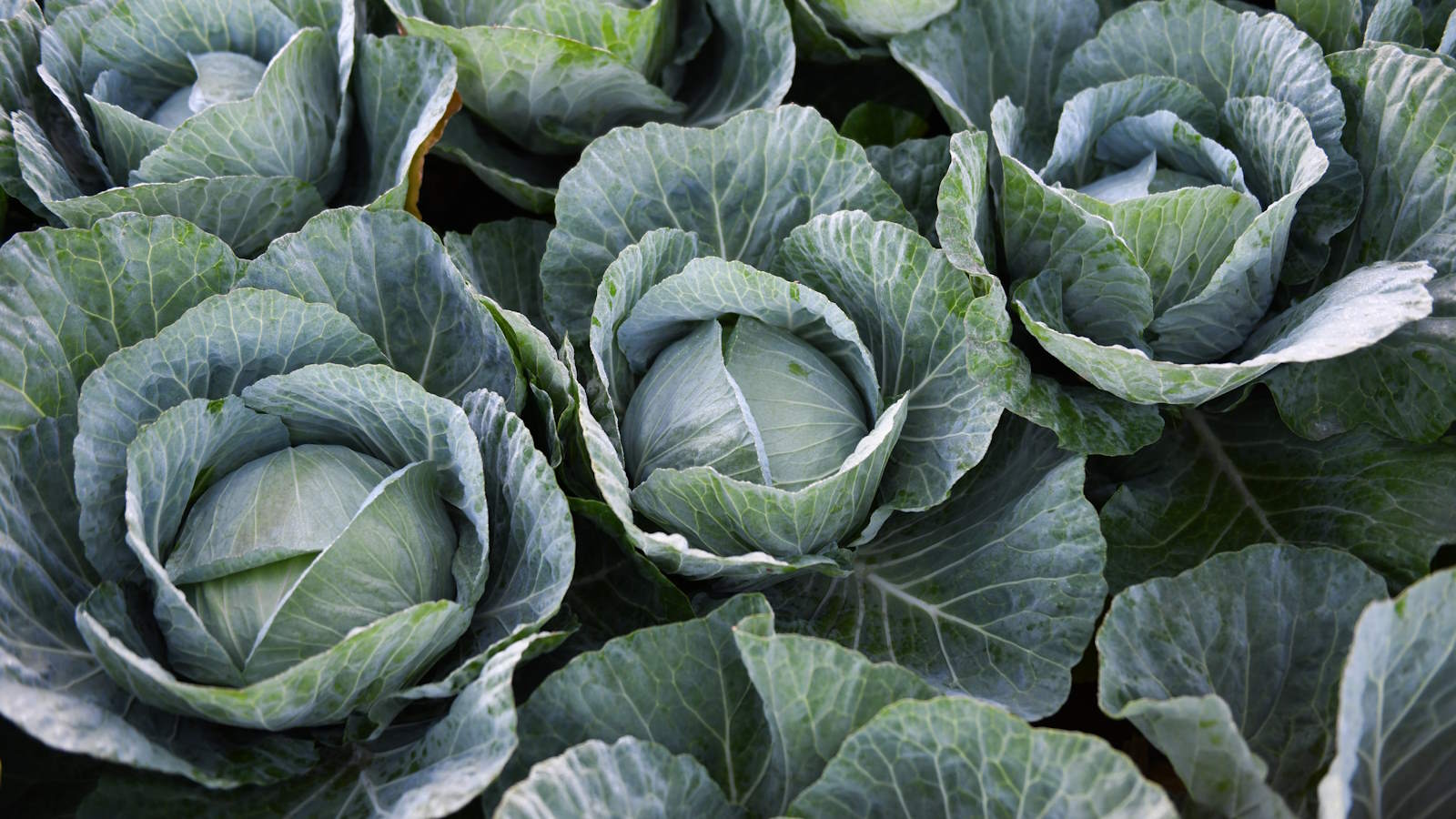 How to grow cabbages in containers – expert tips for top harvests in small urban spaces
How to grow cabbages in containers – expert tips for top harvests in small urban spacesYou can grow lots of different cabbages in pots, troughs, grow bags, or buckets
By Drew Swainston Published
-
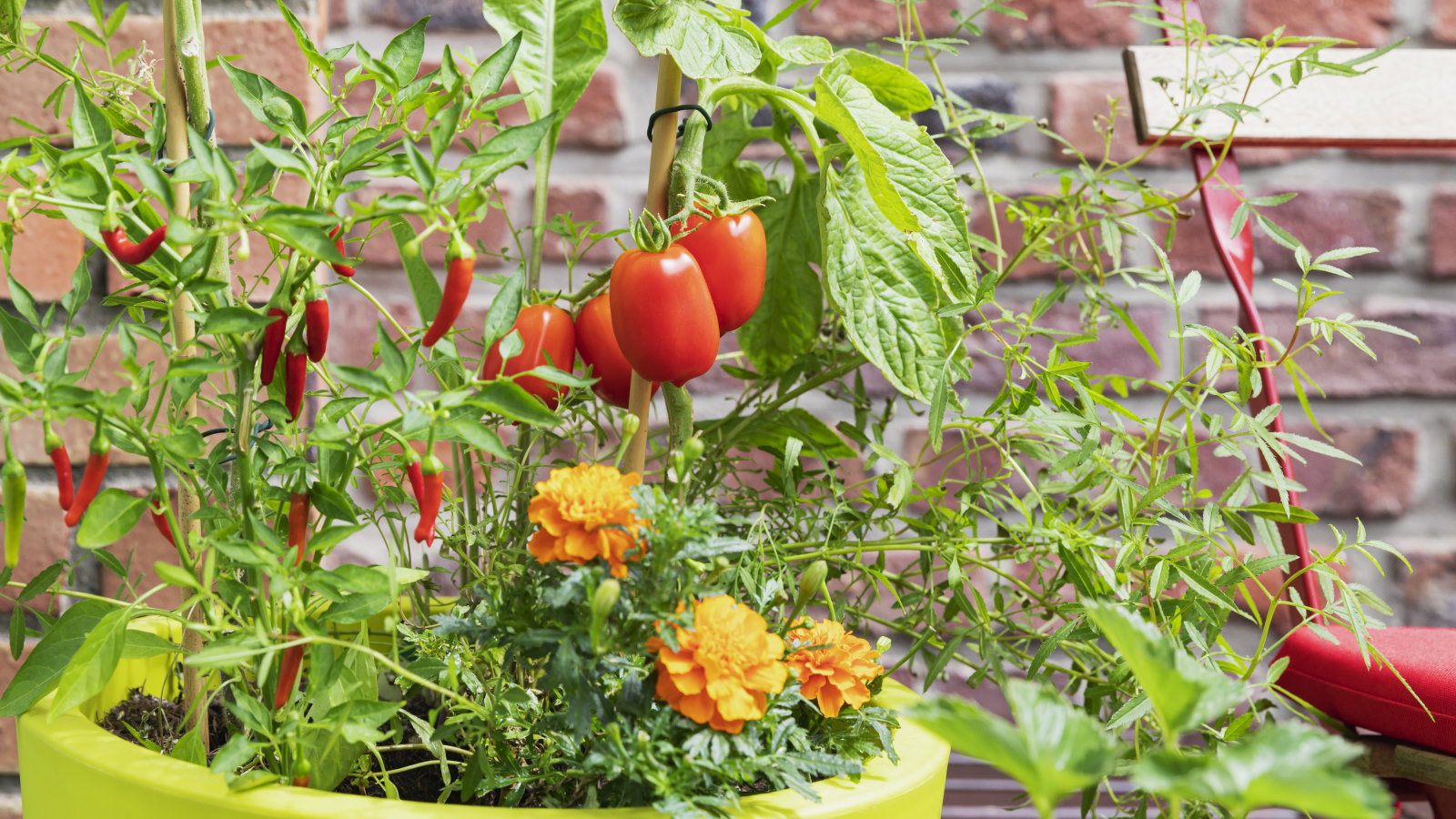 You'll get the best homegrown tomato crops if you plant them next to this one flower – discover why these two are a dream combination
You'll get the best homegrown tomato crops if you plant them next to this one flower – discover why these two are a dream combinationYour tomato plants will be pest-free and covered in fruits
By Drew Swainston Published
-
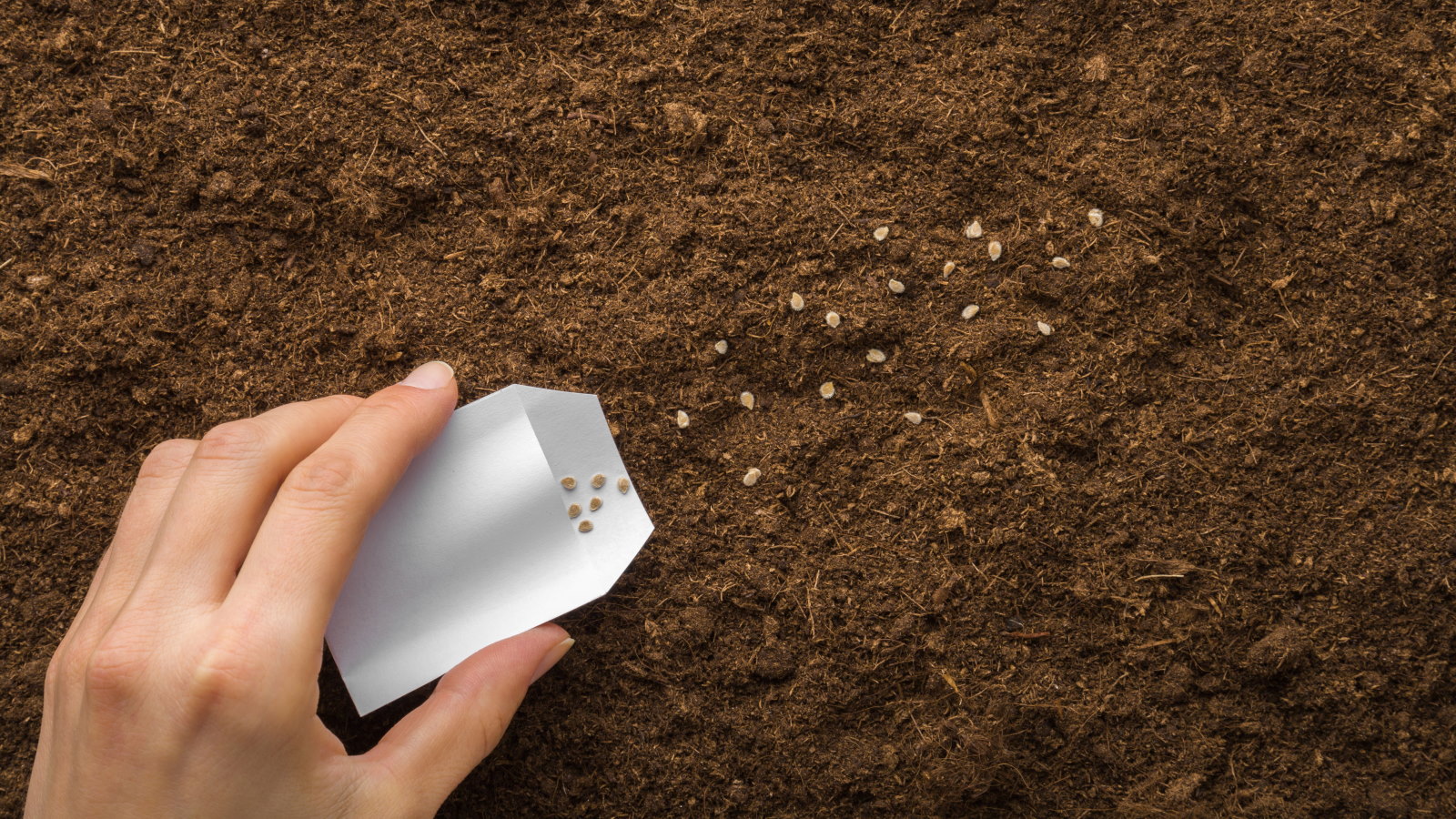 Direct sowing vs transplanting – our grow-your-own expert advises which is best, and shares 5 veggies you should always sow directly
Direct sowing vs transplanting – our grow-your-own expert advises which is best, and shares 5 veggies you should always sow directlyBoth approaches to sowing vegetables have pros and cons
By Drew Swainston Published
-
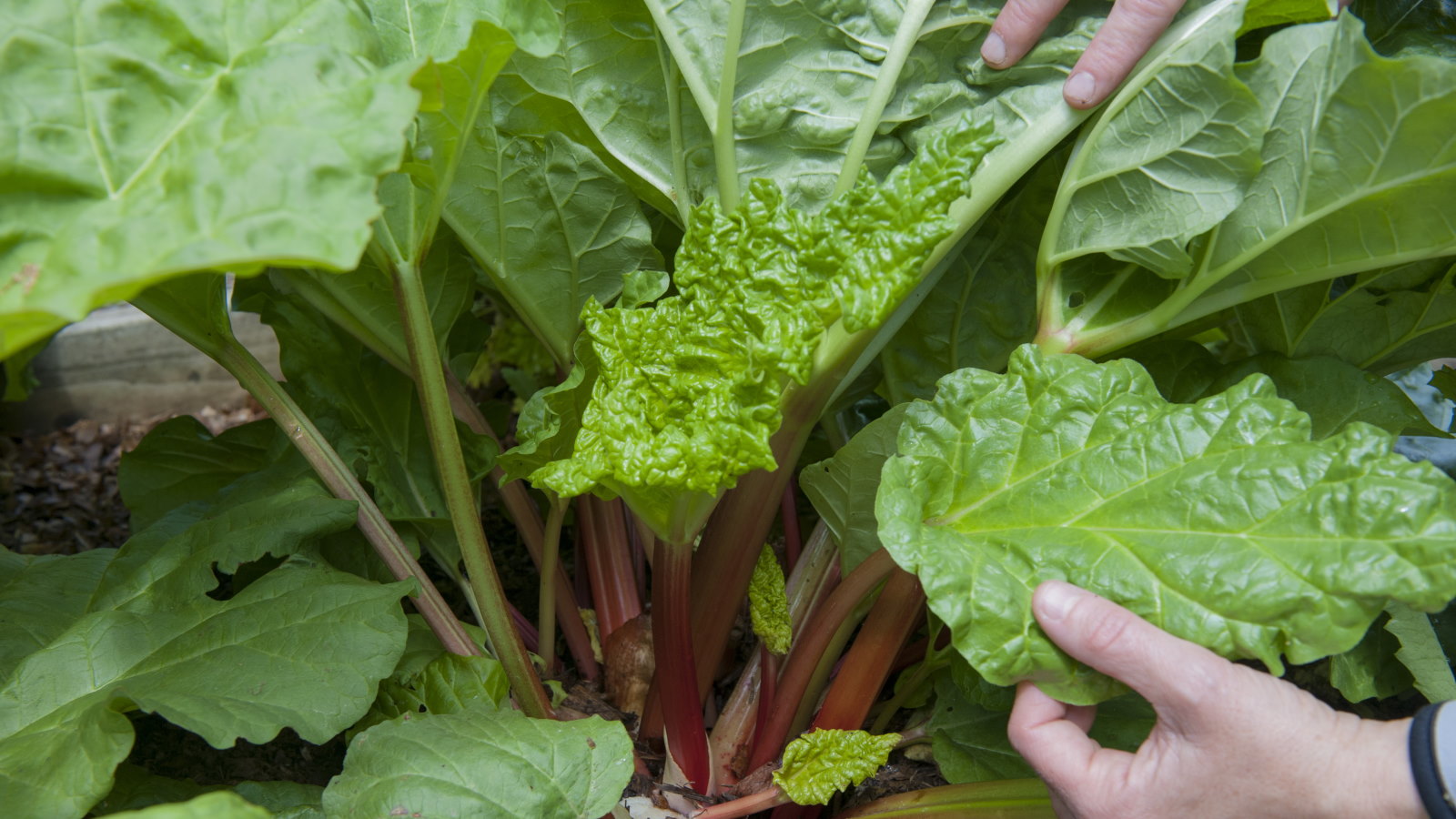 I grew rhubarb from seed for years – here’s exactly how to do it for guaranteed germination and healthy crops of fruit
I grew rhubarb from seed for years – here’s exactly how to do it for guaranteed germination and healthy crops of fruitGrowing rhubarb from seed is a cost-effective way to propagate plants, but it requires care and patience
By Drew Swainston Published
-
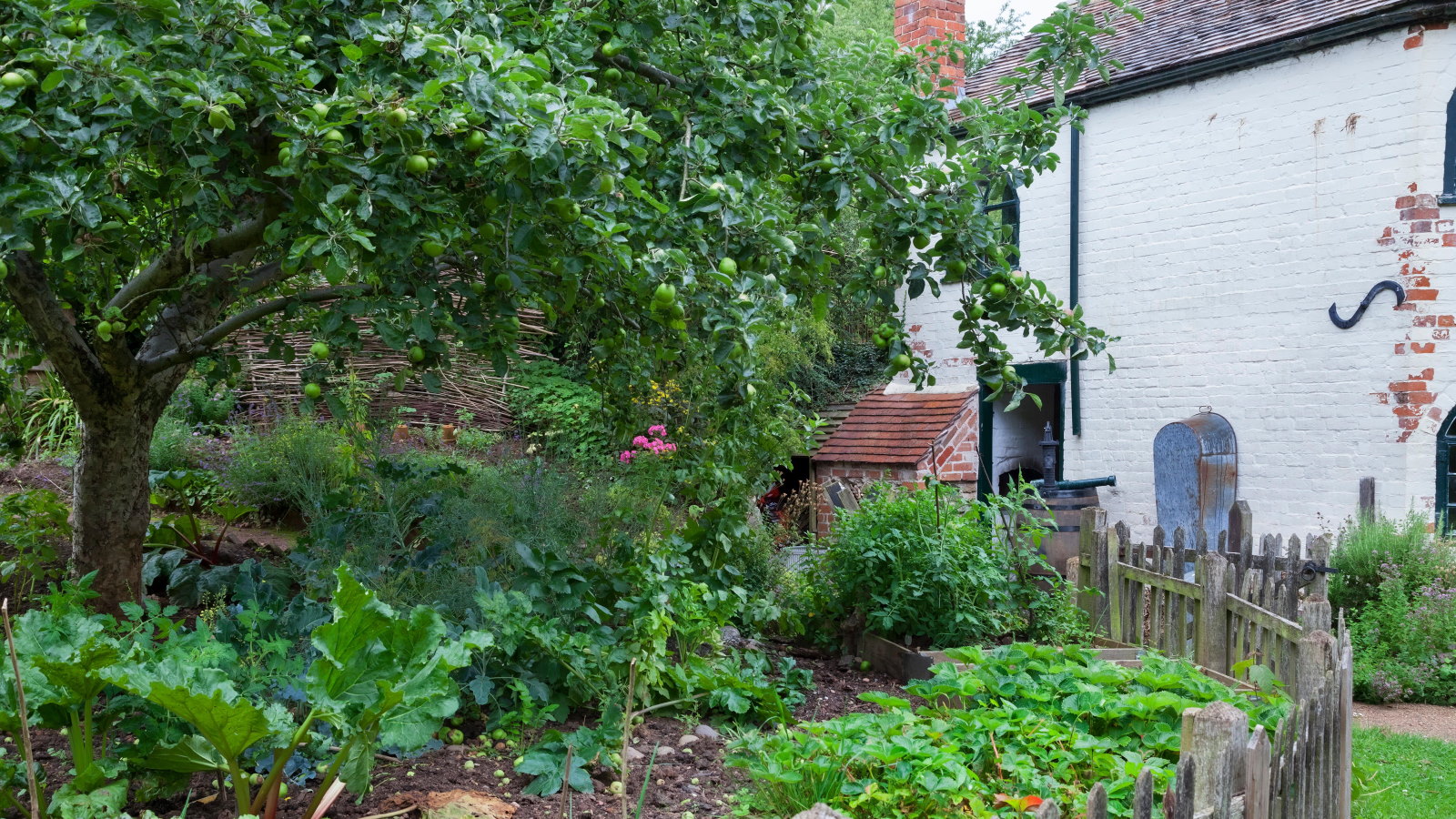 4 reasons you should plant trees in a vegetable garden – plus experts reveal the secrets to help you reap the rewards
4 reasons you should plant trees in a vegetable garden – plus experts reveal the secrets to help you reap the rewardsSee how agroforestry principles can help boost your soil and harvests
By Drew Swainston Published
-
 9 of the best vegetables to grow using the square foot gardening method – for big harvests in small spaces
9 of the best vegetables to grow using the square foot gardening method – for big harvests in small spacesPlus how many of each vegetable can be grown per square foot
By Drew Swainston Published

